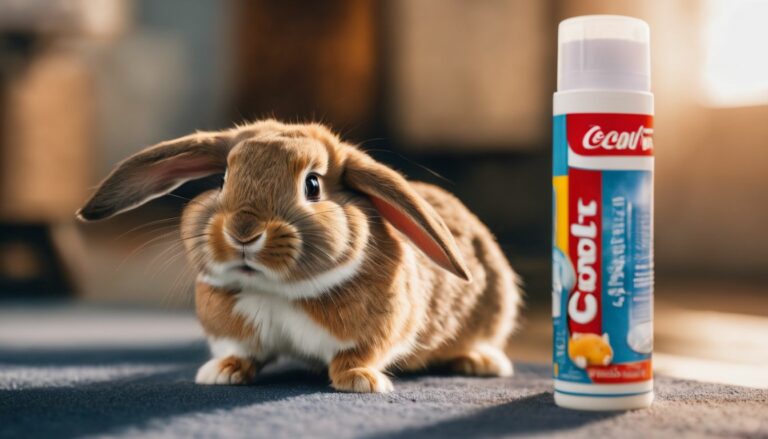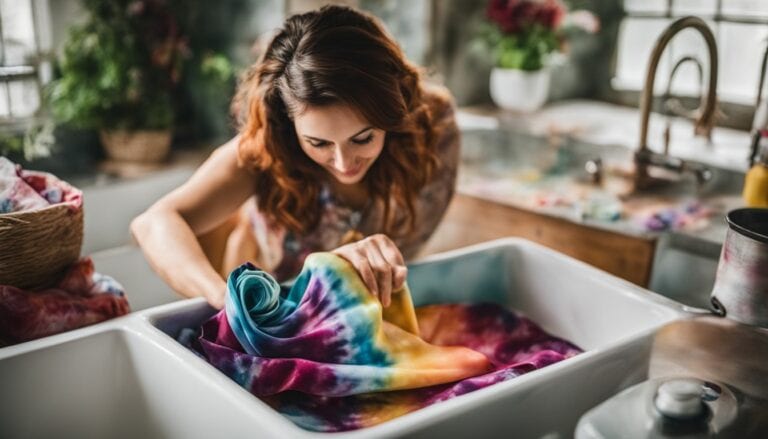Discover Sustainable Bamboo Fabric: Eco-Friendly Textile Innovation
Bamboo fabric has gained popularity in the textile industry for its unique properties and potential sustainability. This article aims to explore the concept of bamboo fabric, its production process, different types, and its sustainability factor.
Sustainable bamboo fabric is of crucial significance in today’s environmentally conscious world. It is important to assess its overall impact on the environment, resource availability, water and land usage, as well as its biodegradability and recycling potential.
Key Takeaway
- Bamboo fabric maximizes sustainability: Bamboo fabric production has a lower environmental impact compared to traditional textiles. Bamboo is a renewable resource that requires less water and land usage in its production.
- Bamboo fabric offers numerous benefits: Bamboo fabric is known for its softness, breathability, and moisture-wicking properties. It is also hypoallergenic, antimicrobial, and provides UV protection.
- Bamboo fabric has some drawbacks: The production process involves chemical processes, and there are limited color options available. Bamboo fabric may require specific care instructions for durability.
What Is Bamboo Fabric?

Bamboo fabric has taken the fashion industry by storm, but what exactly is it? In this section, we’ll unravel the mystery of bamboo fabric and explore its production process and the different types available. Get ready to dive into the world of sustainable textiles and discover the incredible qualities of bamboo fabric that make it a sought-after choice among conscious consumers. So, let’s embark on this textile journey and explore the wonders of bamboo fabric!
Process of Making Bamboo Fabric
The process of making bamboo fabric involves several steps:
- Harvesting: Bamboo plants are cut into smaller pieces. The age of the bamboo at harvest can greatly impact the quality of the fabric.
- Extraction: Bamboo is mechanically or chemically broken down into pulp. This step effectively separates the fibers from the bamboo plant.
- Bleaching: The bamboo pulp undergoes a bleaching process to eliminate impurities and achieve the desired color for the fabric.
- Spinning: The bamboo pulp is skillfully spun into threads or yarns, much like other natural fibers.
- Weaving or Knitting: The bamboo yarns are carefully woven or knitted to create the desired fabric structure. Different techniques can produce a variety of textures and patterns.
- Finishing: The fabric goes through various processes such as dyeing, printing, and softening to achieve the desired final product.
Fact: When compared to cotton and other fabrics, the production of bamboo fabric typically requires less water. Bamboo grows rapidly and requires minimal pesticide usage, making it an environmentally sustainable choice for fabric production.
Different Types of Bamboo Fabric
Different Types of Bamboo Fabric
Bamboo fabric comes in different types, each with unique characteristics and uses. Here is a table that provides information on the various types of bamboo fabric:
| Type | Description | Common Uses |
| 1. Bamboo Rayon | Made using the viscose process. Soft, breathable, and has a smooth texture. | Apparel, bedding, towels |
| 2. Bamboo Lyocell | Made using a closed-loop process. Excellent moisture-wicking properties and has a silky feel. | Activewear, bed sheets, underwear |
| 3. Bamboo Organic Cotton Blend | A blend of bamboo viscose and organic cotton. Combines the softness of bamboo with the durability of cotton. | T-shirts, baby clothing, home textiles |
| 4. Bamboo Hemp Blend | A blend of bamboo viscose and hemp fibers. Known for its strength, durability, and antimicrobial properties. | Outdoor clothing, bags, upholstery |
| 5. Bamboo Silk | Made from the long fibers of the bamboo plant. Has a lustrous sheen and a soft, flowing drape. | Evening gowns, scarves, drapes |
Each type of bamboo fabric offers unique benefits and is suitable for different applications. Whether you’re looking for softness and comfort, moisture-wicking properties, or sustainability, there is a bamboo fabric that meets your needs.
The different types of bamboo fabric provide a range of options for consumers seeking eco-friendly and versatile textiles. From bamboo rayon to bamboo silk, these fabrics offer a combination of comfort, durability, and sustainability. With the growing demand for more environmentally friendly clothing and textiles, bamboo fabric has become a popular choice for conscious consumers. It’s an exciting time for the future of sustainable fashion and the continued innovation and development of bamboo fabric.
Is Bamboo Fabric Sustainable?
Wondering if bamboo fabric is truly sustainable? In this section, we’ll dig into the environmental impact of bamboo fabric production and explore why bamboo is considered a renewable resource. We’ll also take a closer look at the water and land usage involved in bamboo fabric production, as well as the biodegradability and recycling possibilities of this innovative material. Get ready to unveil the sustainability aspects of bamboo fabric!
Environmental Impact of Bamboo Fabric Production
The environmental impact of bamboo fabric production is of utmost importance when assessing its sustainability. Throughout the production process, various environmental concerns emerge, including the use of chemicals such as sodium hydroxide and carbon disulfide. It is crucial to manage and dispose of these chemicals properly to avoid harming the environment.
Water is required in bamboo fabric production; however, it is more water efficient than cotton and other natural fibers. This characteristic contributes to its overall sustainability. Bamboo is a renewable resource that grows rapidly and abundantly, requiring less land compared to crops like cotton.
One of the significant advantages of bamboo fabric is its biodegradability. This means that it can naturally decompose over time without causing harm to the environment. This quality aligns with sustainability goals and emphasizes the importance of ethical and sustainable management in bamboo fabric production.
To make informed choices that align with sustainability goals, individuals must consider the environmental impact of bamboo fabric production. By doing so, they can contribute to the overall promotion of sustainability.
Bamboo as a Renewable Resource
Bamboo is a renewable resource with many benefits and applications. Here are some reasons why bamboo is considered a renewable resource:
1. Rapid growth: Bamboo grows quickly, with some species growing up to 36 inches in just 24 hours. This rapid growth makes bamboo a sustainable option for industries.
2. No replanting required: Bamboo regrows from its existing root system when harvested, eliminating the need for replanting and saving time, effort, and resources. This characteristic further solidifies bamboo as a renewable resource.
3. Low environmental impact: Bamboo requires minimal water, pesticides, and fertilizers compared to other crops. Its eco-friendly nature makes bamboo an excellent choice for those looking to minimize their environmental impact. Bamboo has a high yield per acre, making it an efficient choice for resource utilization.
4. Soil protection: Bamboo’s extensive root system helps prevent soil erosion and stabilizes slopes. By protecting against landslides and improving soil health, bamboo contributes to overall environmental stability.
5. Carbon capture: Bamboo absorbs high amounts of carbon dioxide, making it effective in mitigating climate change. This property further highlights bamboo’s value as a renewable resource.
6. Diverse applications: Bamboo can be used in construction, furniture, textiles, and paper production, providing sustainable alternatives to traditional materials. This versatility makes bamboo a valuable resource in various sectors.
Considering these factors, bamboo undoubtedly qualifies as a renewable resource that offers numerous benefits and sustainable solutions in different sectors.
Water and Land Usage in Bamboo Fabric Production
Water and land usage in bamboo fabric production is crucial for evaluating its sustainability. Bamboo fabric production requires less water than cotton or hemp, estimated to be only about 20% of the water used for cotton cultivation. Bamboo is a highly efficient plant that can grow rapidly in different climates and soil conditions, requiring less land space compared to other crops like cotton or timber for the same fiber production. By utilizing fewer water and land resources, bamboo fabric production can reduce strain on these valuable natural resources, making it a more sustainable choice compared to other fabrics. Bamboo’s fast growth rate and ability to regenerate quickly further contribute to its sustainability. It is important to consider other factors such as the chemical processes involved and the end-of-life options for the fabric when determining the overall sustainability of bamboo fabric. Considering the efficient water and land usage, bamboo fabric can be an environmentally friendly choice for those seeking sustainable alternatives in the textile industry.
Biodegradability and Recycling of Bamboo Fabric
Bamboo fabric is an excellent choice due to its biodegradability and recyclability. Not only does it naturally break down in the environment, reducing waste and pollution, but it also decomposes without leaving any harmful residues when disposed of properly. What’s even better is that bamboo fabric can be processed and reused to create new products, which helps decrease the demand for new resources and minimizes the environmental impact.
By opting for bamboo fabric, you actively support a more circular economy and reduce our reliance on non-renewable resources. For effective biodegradability and recycling, it’s important to separate bamboo fabric from non-biodegradable or non-recyclable materials and send it to designated facilities or compost it in appropriate systems.
Although bamboo fabric offers numerous benefits, it’s crucial to address its environmental impact by implementing sustainable practices throughout the entire production process, from bamboo cultivation to fabric manufacturing. These practices are vital for minimizing any negative effects on ecosystems and natural resources.
The Benefits of Bamboo Fabric

Discover the wonders of bamboo fabric in this article as we explore the many benefits it offers. From its incredible softness and comfort to its breathability and moisture-wicking properties, bamboo fabric is revolutionizing the textile industry. Not only that, but it also boasts hypoallergenic and antimicrobial qualities, making it an excellent choice for those with sensitive skin. And if that’s not enough, bamboo fabric even provides UV protection. Get ready to be amazed by the numerous advantages of this sustainable and eco-friendly textile option.
Softness and Comfort
Bamboo fabric is renowned for its softness and comfort. The fibers of bamboo create a lavish texture that is gentle against the skin. The smooth surface of bamboo fabric provides a silky feel, making it highly sought after for clothing and bedding.
The softness of bamboo fabric emanates from its round and smooth fibers, which effortlessly glide over the skin without causing irritation or friction. This characteristic makes bamboo fabric incredibly comfortable to wear, especially for individuals with sensitive skin.
Bamboo fabric is not only soft but also breathable. The natural properties of bamboo fibers aid in regulating body temperature, ensuring that you stay cool in warm weather and warm in cool weather. This breathability further enhances the overall comfort of wearing bamboo fabric.
It is important to note that the softness and comfort of bamboo fabric may vary depending on the type of bamboo used and the manufacturing process. Different types, such as bamboo viscose and bamboo lyocell, may possess different textures. Therefore, it is crucial to select a reputable brand that places a high priority on quality and craftsmanship.
Fact: Bamboo fabric is often likened to cashmere for its softness and luxurious feel. This makes it an environmentally friendly and affordable alternative.
Breathability and Moisture-wicking Properties
The breathability and moisture-wicking properties of bamboo fabric make it an excellent choice for comfort and performance.
Bamboo fabric has natural micro-gaps and micro-holes that improve air circulation, allowing heat to escape and keeping you cool and comfortable.
It also quickly absorbs and evaporates moisture, keeping your skin dry and reducing the risk of bacterial growth and odors.
These breathability and moisture-wicking properties of bamboo fabric make it ideal for active wear and hot climates.
Additionally, bamboo fabric’s thermo-regulating properties help maintain body temperature in both warm and cool weather.
Furthermore, bamboo fabric is hypoallergenic and gentle on sensitive skin, making it less likely to cause allergies or irritations compared to other fabrics.
Its softness and luxurious feel against the skin provide comfort and a gentle touch.
Moreover, bamboo fabric is strong and durable, making it long-lasting and able to withstand regular wear and washing.
These qualities make bamboo fabric a popular choice for various applications such as clothing, bedding, and towels, where breathability and moisture-wicking properties are highly desired.
Hypoallergenic and Antimicrobial Qualities
Bamboo fabric offers a variety of desirable qualities, including its natural hypoallergenic and antimicrobial properties. This makes it a fantastic choice for individuals with sensitive skin or allergies.
The fabric’s gentle nature ensures it is kind to the skin and reduces the risk of irritation or allergic reactions.
Bamboo fabric’s inherent antimicrobial qualities actively inhibit the growth of bacteria and other microorganisms, resulting in a longer-lasting, fresh, and odor-free fabric.
If you are seeking comfort and peace of mind, look no further than bamboo fabric, with its hypoallergenic and antimicrobial qualities.
UV Protection
UV Protection is a benefit of Bamboo Fabric. Bamboo fabric blocks up to 98% of harmful UVA and UVB rays. This high level of protection is due to the natural properties of bamboo fibers, which absorb and disperse UV radiation. Wearing clothing made from bamboo fabric can help protect your skin from sunburn and premature aging caused by the sun. It is particularly beneficial for individuals with sensitive skin or those prone to sunburns. The level of UV protection may vary depending on the weave, thickness, and color of the fabric.
“I recently wore a bamboo fabric shirt on a beach vacation and was amazed that my skin didn’t even turn pink after spending hours under the scorching sun. While my friends dealt with sunburns, I enjoyed the beach without worrying about UV rays. Bamboo fabric truly provided the promised UV protection, and I now believe in its benefits for sun safety.”
The Drawbacks of Bamboo Fabric
Bamboo fabric has become increasingly popular, but it’s important to understand its drawbacks. In this section, we’ll uncover some key aspects that may give you second thoughts about this seemingly sustainable fabric. From the chemical processes involved to the limited color options and durability concerns, we’ll shed light on the considerations you need to keep in mind when choosing bamboo fabric. So, let’s dive in and explore the not-so-rosy side of this eco-friendly textile.
Chemical Processes Involved
Bamboo fabric production involves chemical processes with potential environmental impacts. Some key aspects are outlined in the table below:
| Chemical Process | Implication |
| Chemical solvents | Used to dissolve bamboo pulp into a viscose solution, which is extruded into fibers. Common solvents include sodium hydroxide and carbon disulfide. |
| Environmental impact | Improper management of chemical solvents can have negative impacts on the environment. Sodium hydroxide, if released into water sources without treatment, can be harmful. Carbon disulfide, used in spinning the viscose solution, is toxic and can adversely affect workers’ health if not handled properly. |
| Effluent treatment | To mitigate the environmental impact, responsible bamboo fabric manufacturers implement effluent treatment systems to manage and treat chemical waste generated during production. Proper treatment helps minimize the release of harmful chemicals into the environment. |
Manufacturers must adhere to regulations and best practices to minimize the negative effects of chemical processes involved in bamboo fabric production. This includes proper handling, treatment, and disposal of chemicals to protect workers and the environment.
Limited Color Options
Bamboo fabric has limited color options. Achieving vibrant and saturated colors in bamboo fabric is challenging due to its natural properties. Bamboo fabric is mostly available in earthy tones like beige, brown, and green. These neutral colors are versatile and blend well with different styles and aesthetics. If you prefer bold and vibrant shades, bamboo fabric may not provide the color options you desire.
To work with the limited color options of bamboo fabric, here are some suggestions:
- Pair bamboo fabric garments or accessories with colorful and vibrant accessories, such as statement jewelry, scarves, or shoes, to add a pop of color to your outfit.
- Experiment with different patterns and prints to enhance the visual interest of bamboo fabric garments.
- Explore natural dyeing techniques to create unique and customized colors on bamboo fabric.
- Consider layering bamboo fabric garments with other clothing items in complementary colors to create interesting color combinations.
- Embrace the earthy and neutral tones of bamboo fabric and incorporate them into an overall natural and organic aesthetic.
By understanding the limited color options of bamboo fabric, you can make informed decisions about incorporating it into your wardrobe and styling choices.
Durability and Care Instructions
Durability and Care Instructions are essential for maintaining Bamboo fabric. This fabric is known for its long-lasting and strong qualities, with the ability to withstand frequent use and washing without losing its shape or strength.
When washing bamboo fabric, it is important to use cold water and a gentle cycle to preserve its durability. Harsh detergents or bleach should be avoided as they can damage the fibers.
To dry bamboo fabric, it is recommended to use low heat or air drying as high heat can weaken the fibers and cause shrinkage. When ironing bamboo fabric, it is best to use low or medium heat and a pressing cloth to protect it from direct heat.
When removing stains from bamboo fabric, it is important to act quickly and gently blot the stain using a mild detergent or stain remover. Rubbing should be avoided to prevent fabric damage.
Storing bamboo fabric in a cool and dry place is important to prevent moisture or mildew buildup. Direct sunlight should also be avoided to prevent fading.
By following these care instructions, the longevity and durability of bamboo fabric can be ensured. So, take proper care of bamboo fabric to enjoy its benefits for a long time.
Some Facts About What Is Bamboo Fabric And Is It Sustainable?
- ✅ Bamboo fabric is made from the pulp of the bamboo plant and is considered eco-friendly due to its fast growth and low requirements for water, fertilizer, and pesticides. (Source: goingzerowaste.net)
- ✅ There are three types of bamboo fabric: conventional viscose bamboo rayon, lyocell process bamboo rayon, and bamboo linen. (Source: goodonyou.eco)
- ✅ Conventional viscose bamboo rayon requires a chemical-intensive process, while lyocell process bamboo rayon involves recycling chemicals and water. (Source: goingzerowaste.net)
- ✅ Bamboo linen, made using natural enzymes, requires fewer resources compared to bamboo rayon. (Source: goingzerowaste.net)
- ✅ While bamboo fabric has advantages such as antimicrobial properties, breathability, and durability, it can be scratchy against sensitive skin and may shrink when washed at high temperatures. (Source: brightly.eco)
Frequently Asked Questions
Is bamboo fabric sustainable?
Yes, bamboo fabric is considered sustainable due to its rapid growth, minimal water and fertilizer requirements, and ability to sequester carbon dioxide. The sustainability of bamboo fabric depends on the manufacturing process used and the sourcing practices of the brand.
How is bamboo fabric made?
Bamboo fabric is made from the pulp of the bamboo plant, which is crushed and separated from the fiber. There are three types of bamboo fabric: conventional viscose bamboo rayon, lyocell process bamboo rayon, and bamboo linen. Conventional viscose bamboo rayon involves a chemically-intensive process, while lyocell process bamboo rayon recycles chemicals and water. Bamboo linen is made using natural enzymes and requires fewer resources.
What are the advantages of bamboo fabric?
Bamboo fabric has several advantages. It is antimicrobial, renewable, durable, breathable, and elastic. It also absorbs color well and has a unique shine when dyed. Bamboo fabric is considered better than cotton as a raw material because it is naturally pest-resistant and requires less water.
Are there any drawbacks to using bamboo fabric?
Yes, there are some drawbacks to using bamboo fabric. It can be scratchy against sensitive skin, and it may shrink when washed at high temperatures. Bamboo fabric is also typically more expensive than traditional fabrics. Some bamboo fabrics are manufactured with harsh chemicals, so it is important to check the manufacturing process used by the brand.
How can I find sustainable bamboo fabric products?
To find sustainable bamboo fabric products, you can look for brands that prioritize responsible and transparent sourcing practices. Brands like ONNO, Cariloha, and Free Fly source their raw materials from sustainable bamboo farms and use eco-friendly production processes. It is also important to consider factors such as durability, softness, and whether or not the fabric has undergone mercerization.
How do I care for bamboo fabric?
Caring for bamboo fabric is relatively easy. It can be machine washed or dry cleaned with cold water and a gentle detergent. It is recommended to avoid bleach and fabric softener. Bamboo fabric is known for its durability, but proper care can help prolong its lifespan.







